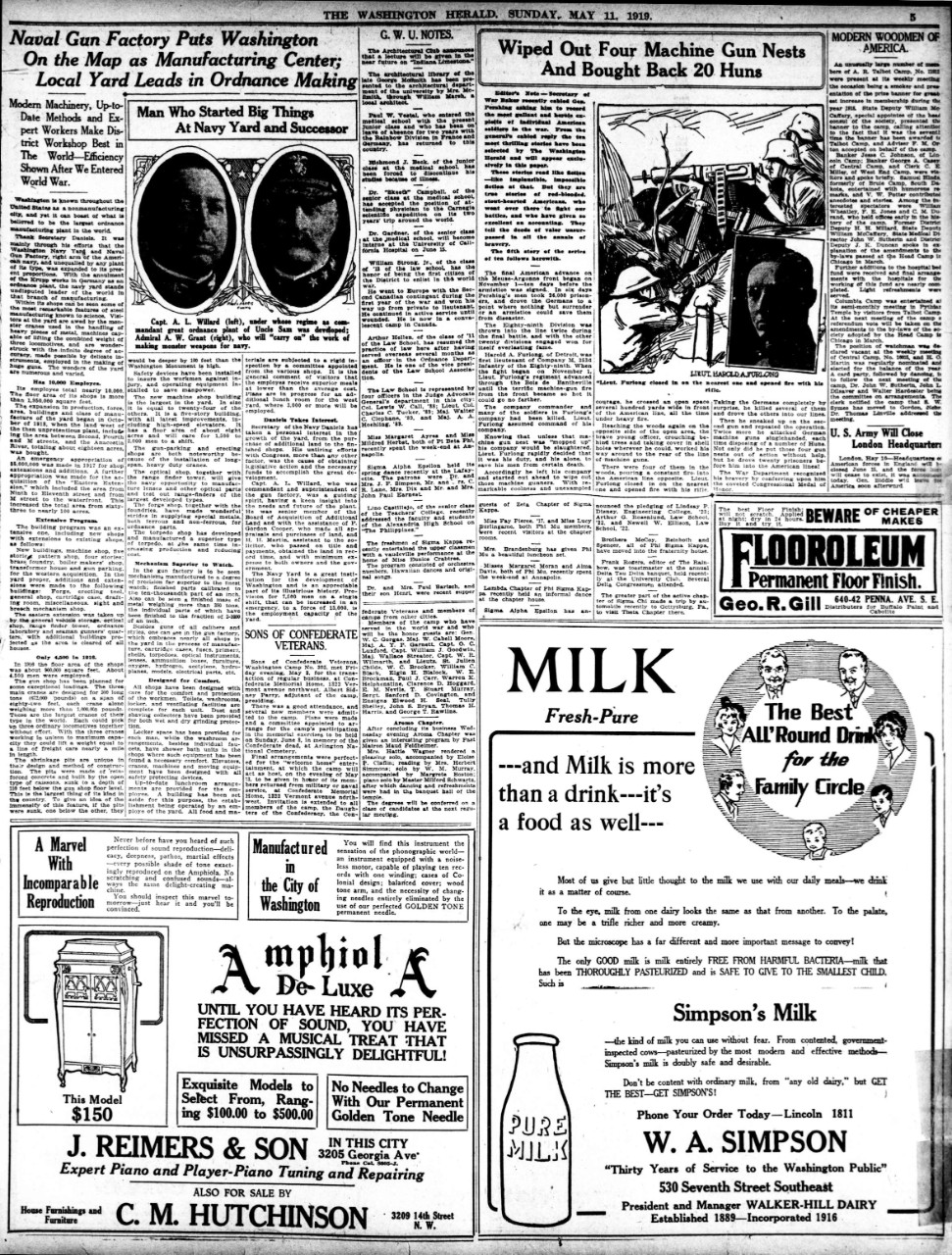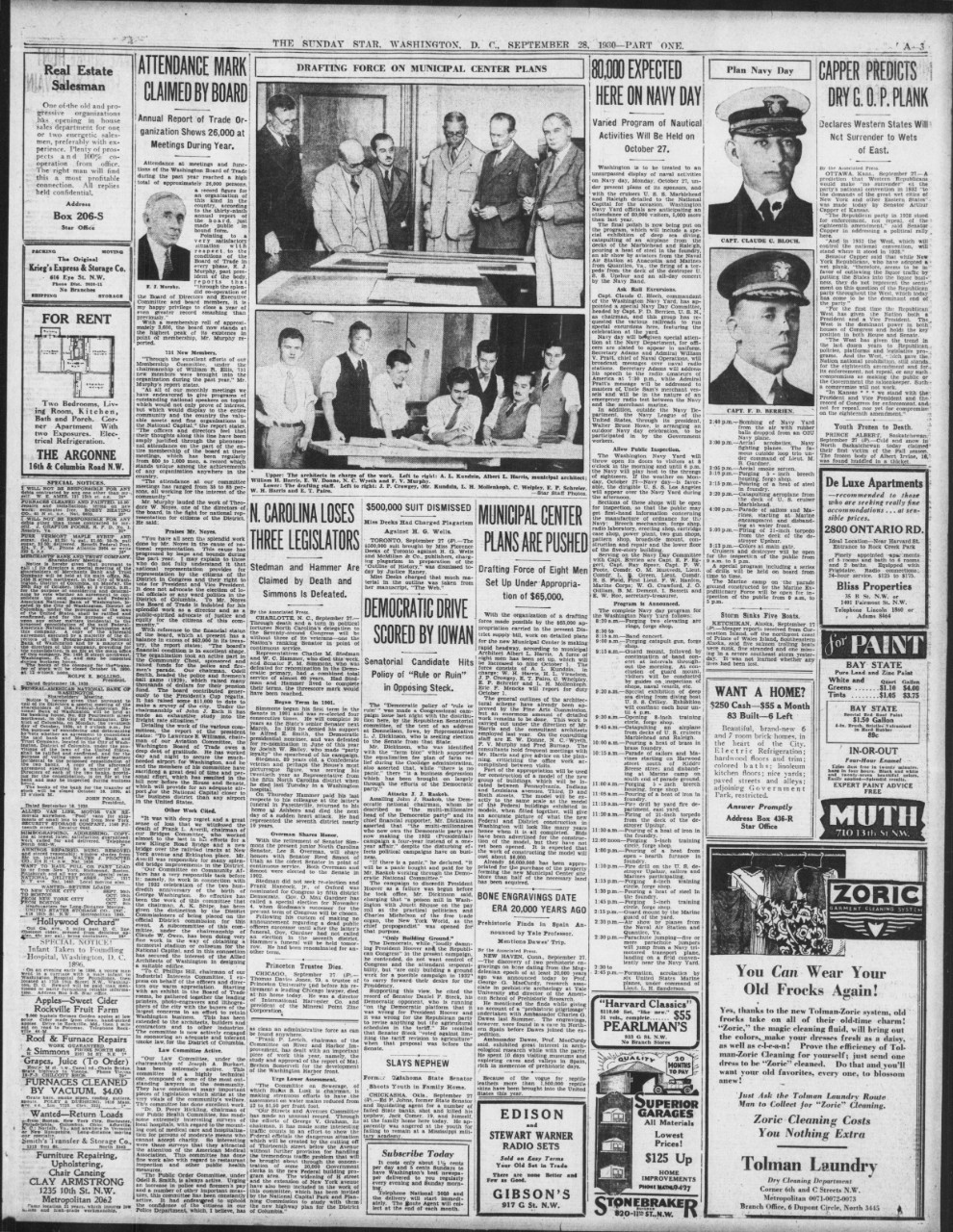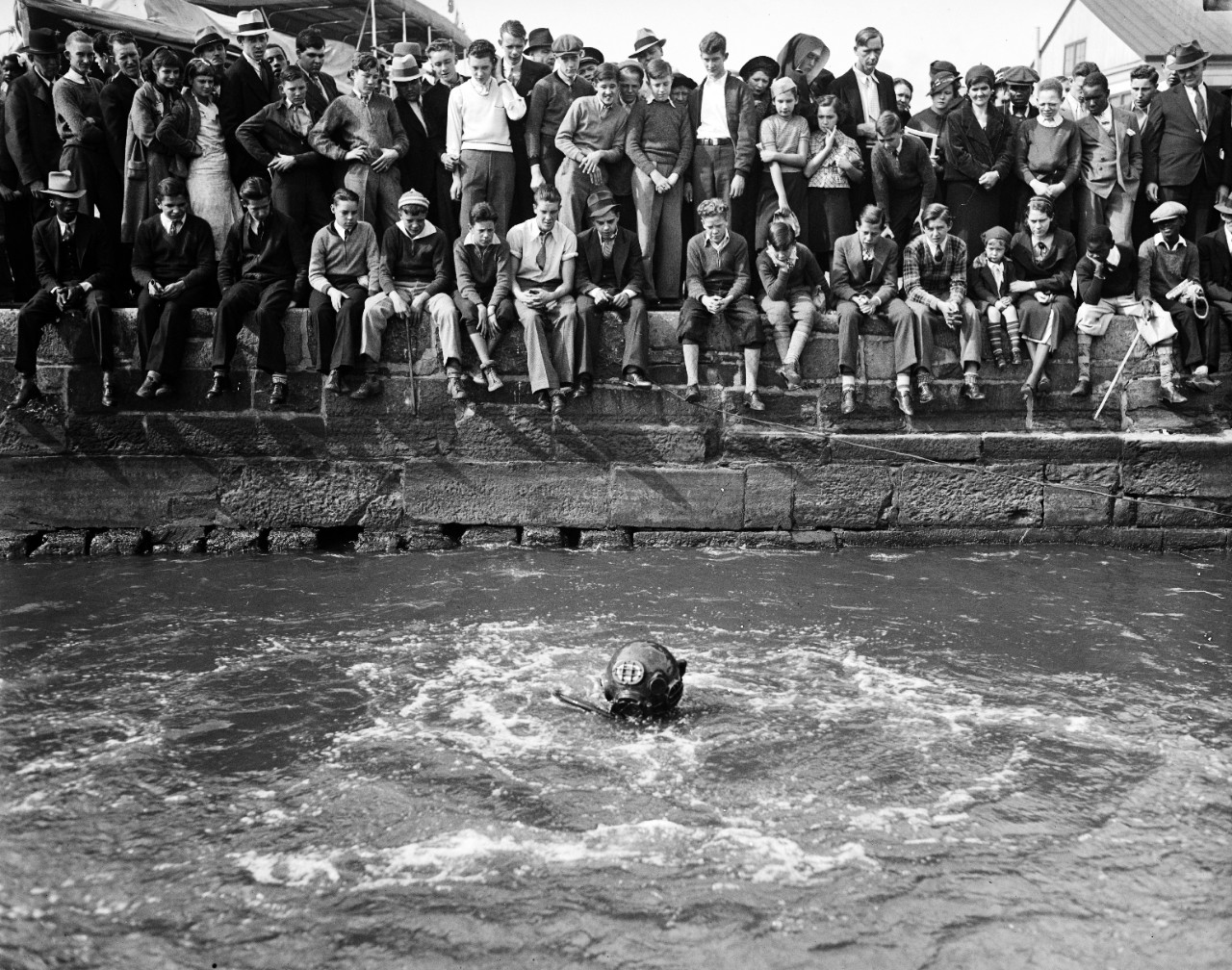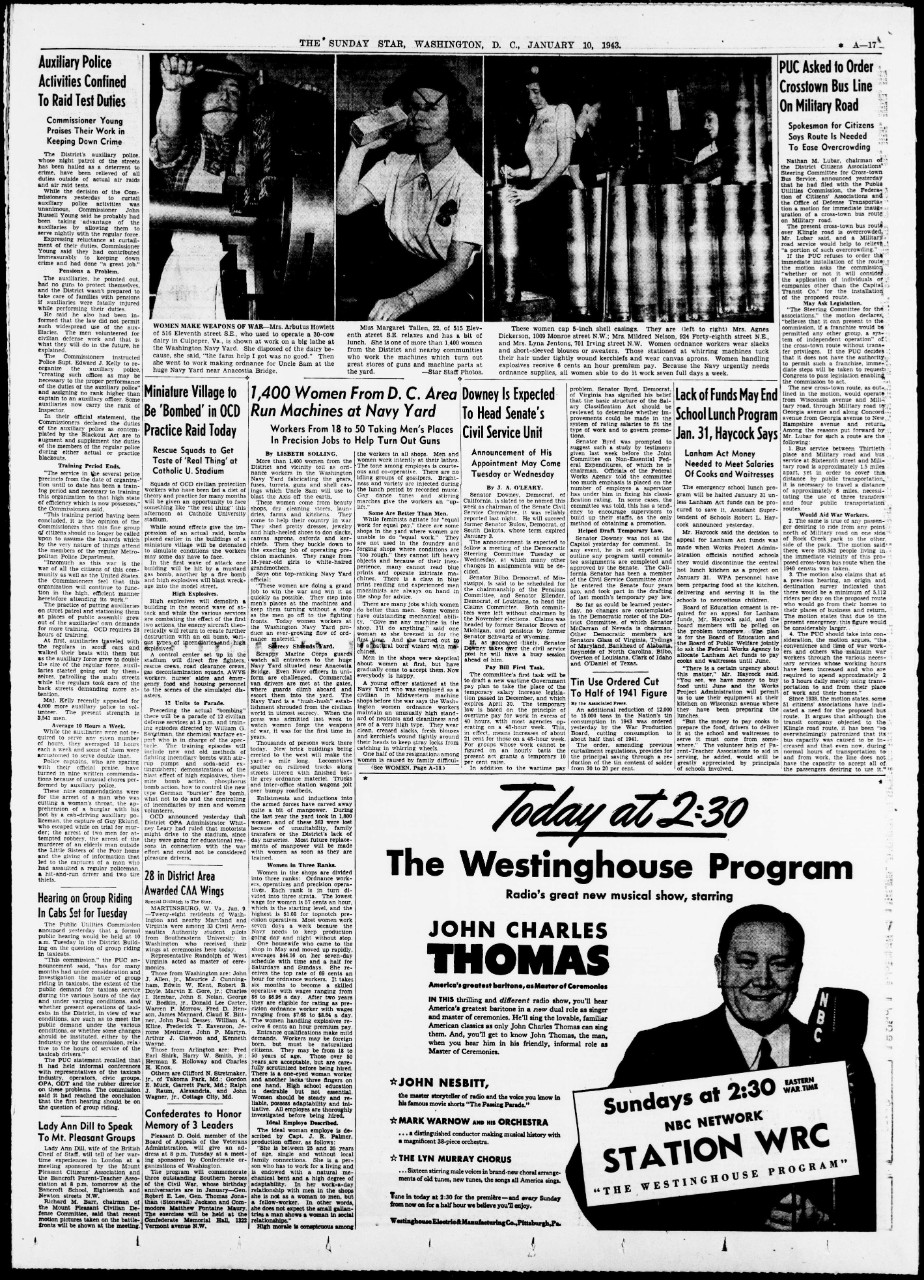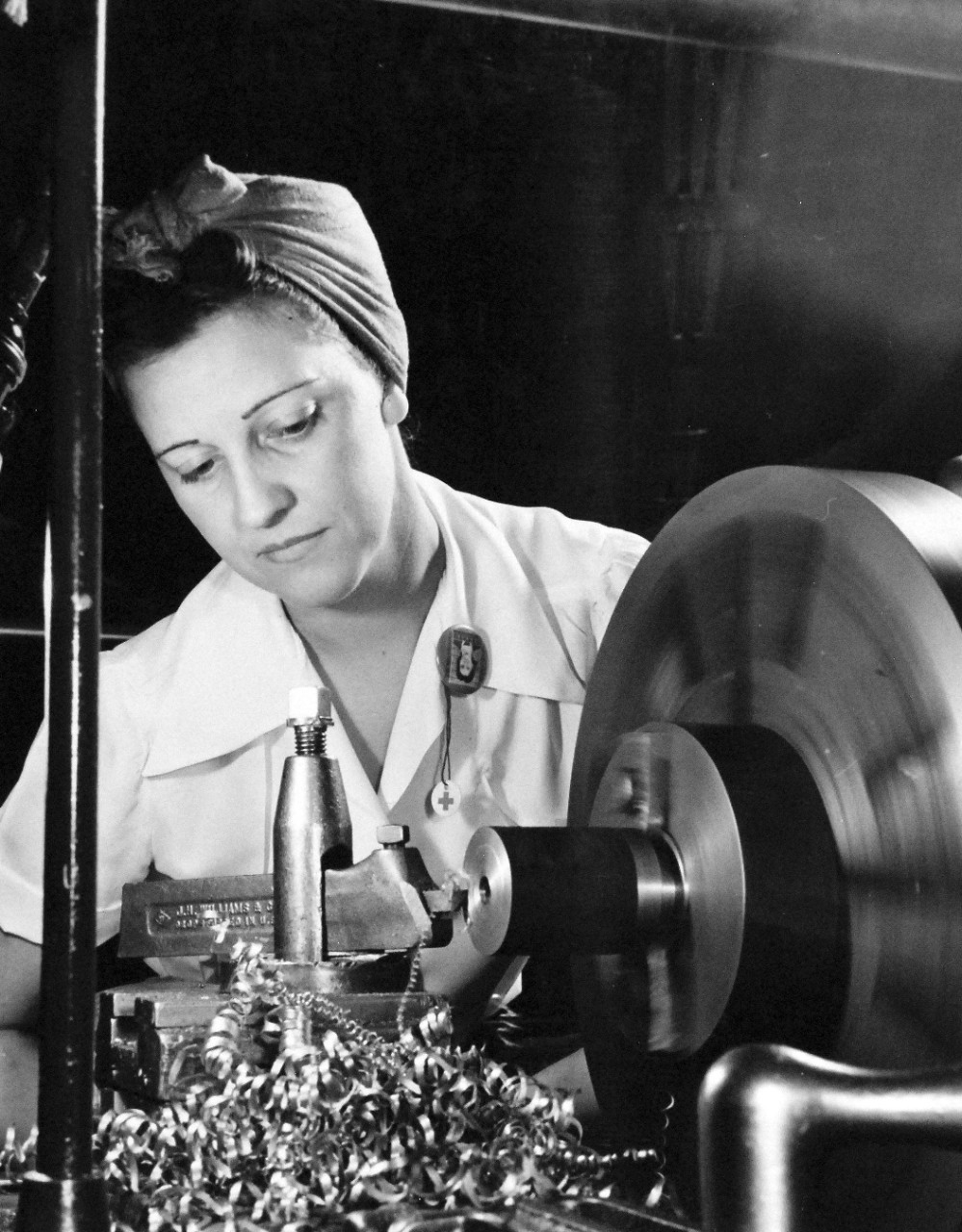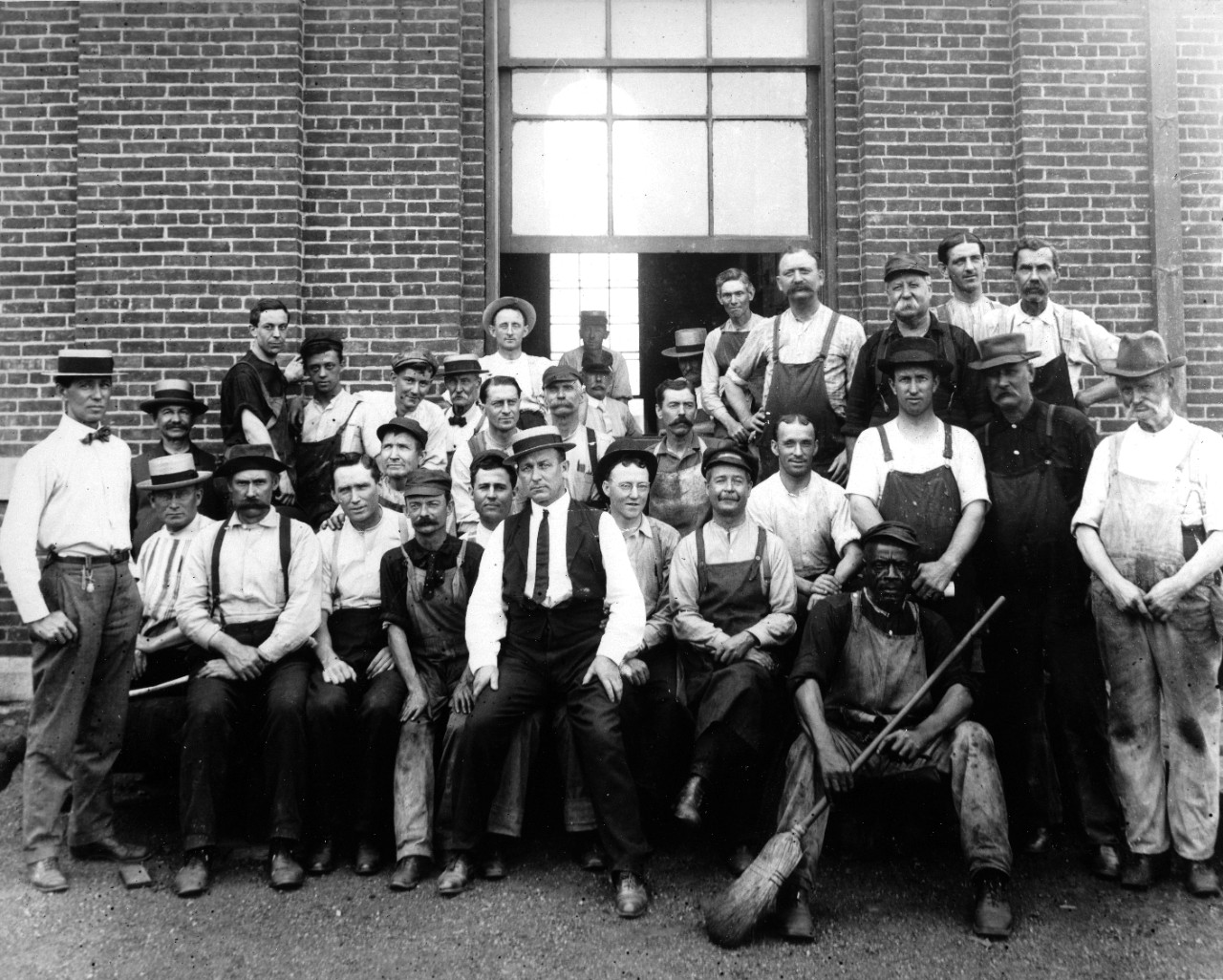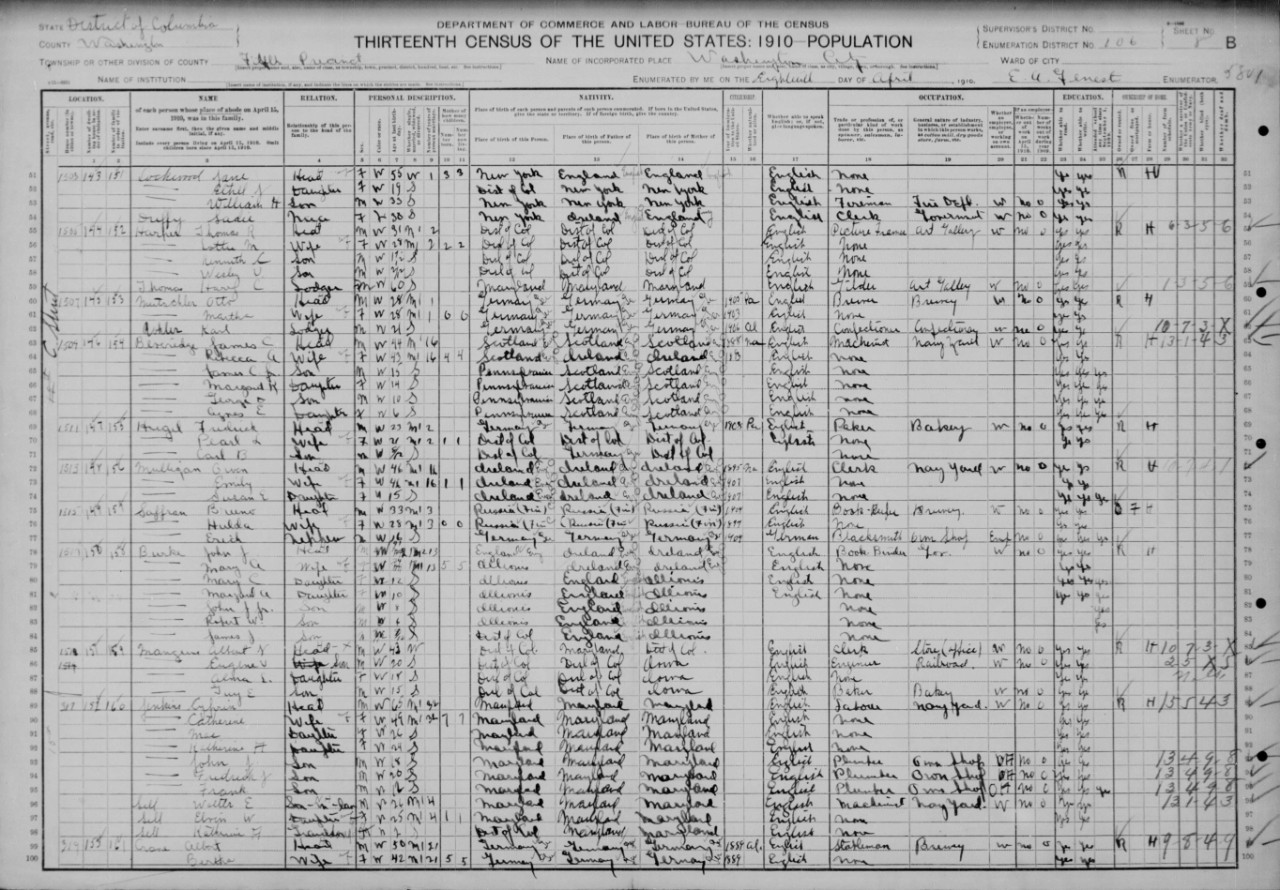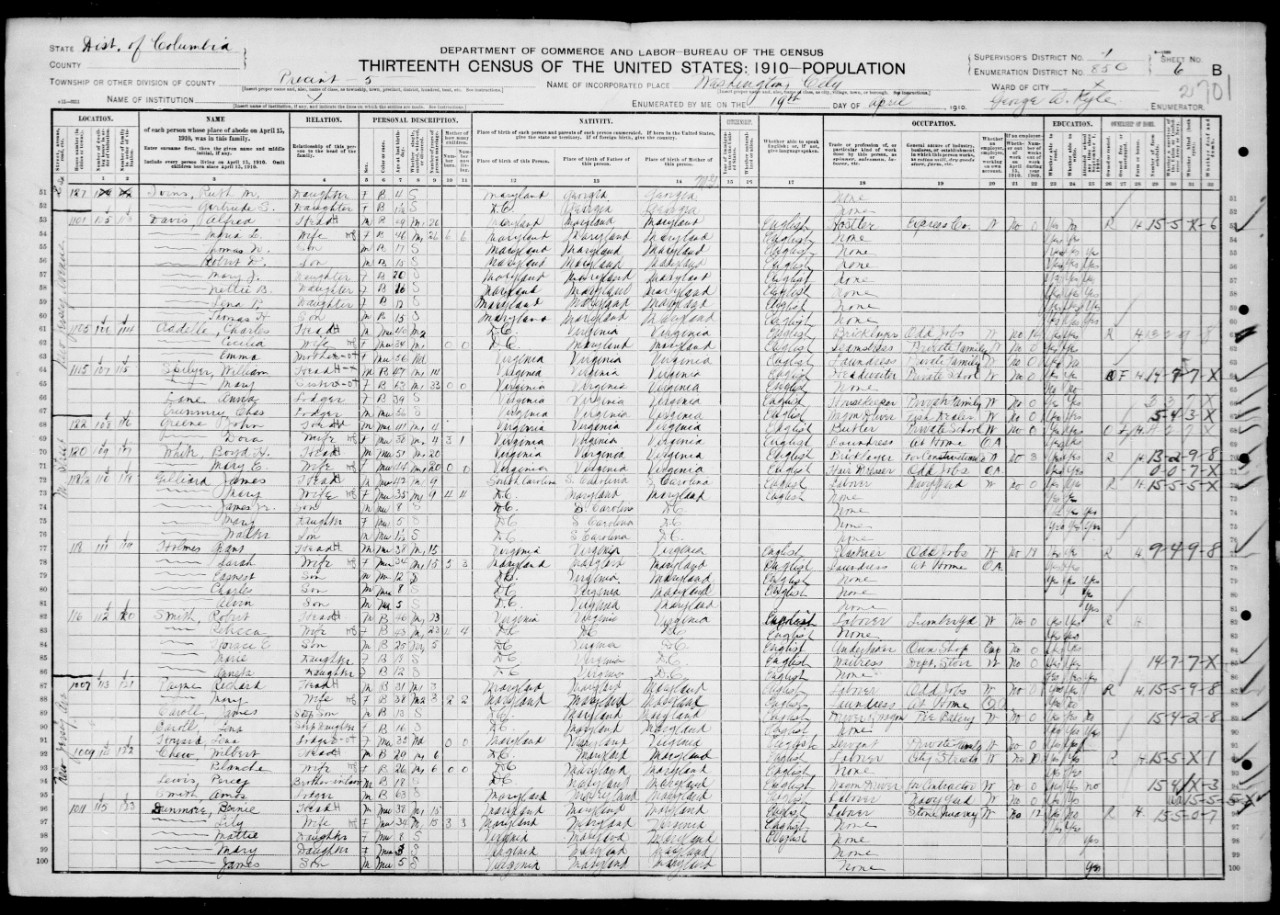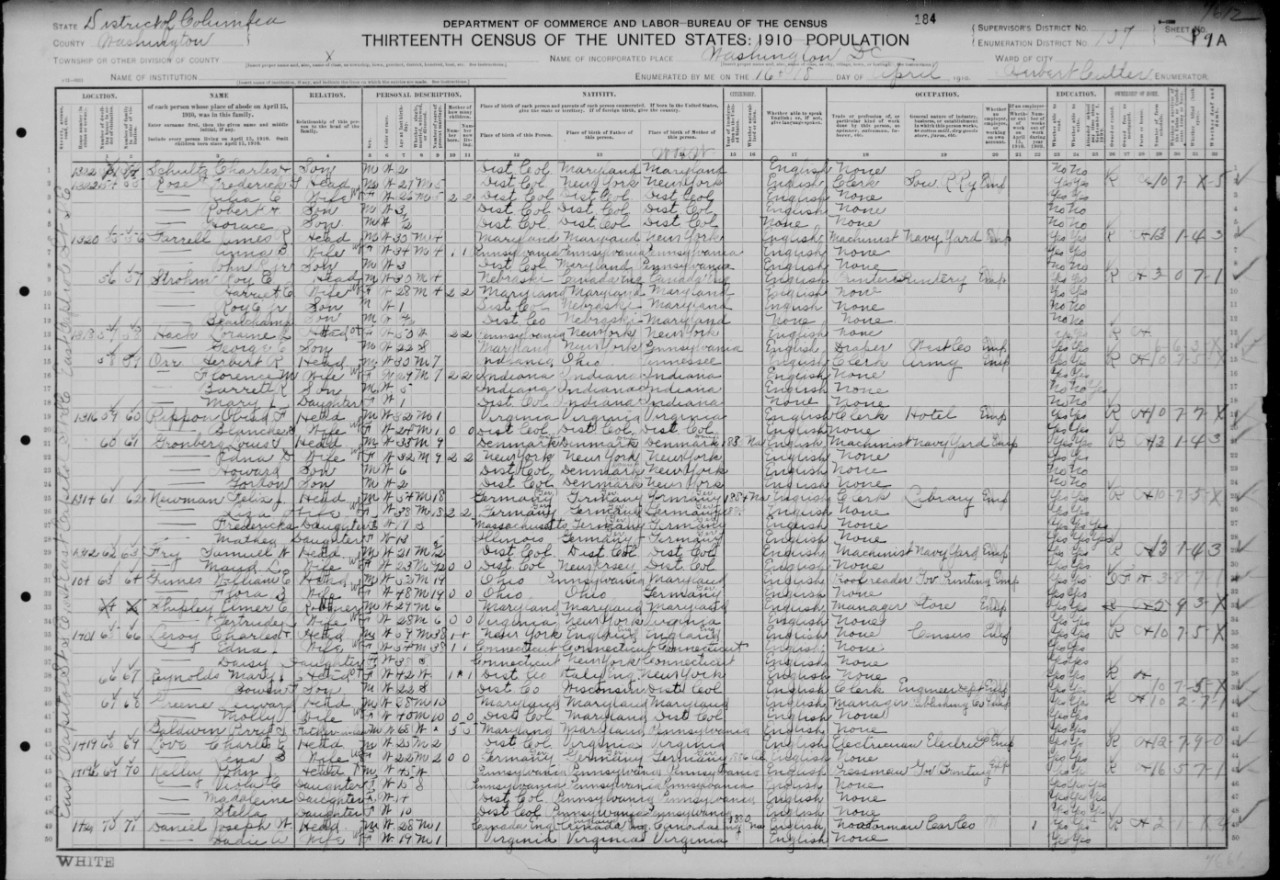
The Washington Navy Yard, the Navy’s oldest shore establishment, has supported U.S. naval operations since its founding in 1799. Initially, the Yard was a ship repair facility, but the federal government’s authorization of a “New Navy” in 1882, characterized by modern steel ships, dramatically shifted the base’s mission. In 1886, Congress established the U.S. Naval Gun Factory at the Yard to produce naval guns and ammunition for this modernized fleet.
From 1886 to 1961, the Naval Gun Factory employed thousands of people and was one of the largest employers in Washington D.C. Workers came from diverse backgrounds and performed a range of duties. Most personnel, including a number of European immigrants, were working-class people who served as mechanics, machinists, and blacksmiths. Still other groups, like Black Americans and women, often endured discrimination and were relegated to low-paying jobs. Regardless of position, working with or near hot metal, forges, industrial equipment, and explosive ordnance meant that most employees spent long hours laboring under demanding and dangerous conditions. Historical newspapers and information from the U.S. Census offer glimpses into the lives of people who worked there.
DC Newspapers and the Washington Navy Yard: Local newspapers like the Washington Herald and the Evening Star regularly included information on events at the Naval Gun Factory, sporting events, and other aspects of employees’ lives outside of work. When local newspapers discussed specific NGF employees, they usually identified their assigned shops.

Washington Herald, July 6, 1919, Courtesy of the Library of Congress.
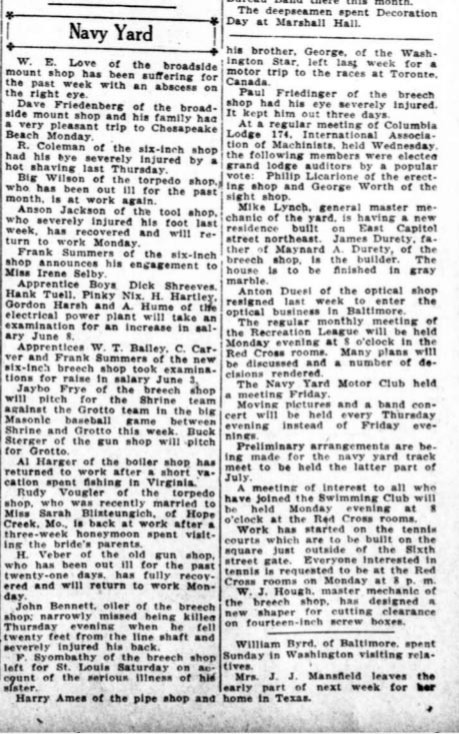
Washington Herald, June 6, 1920, Courtesy of the Library of Congress.
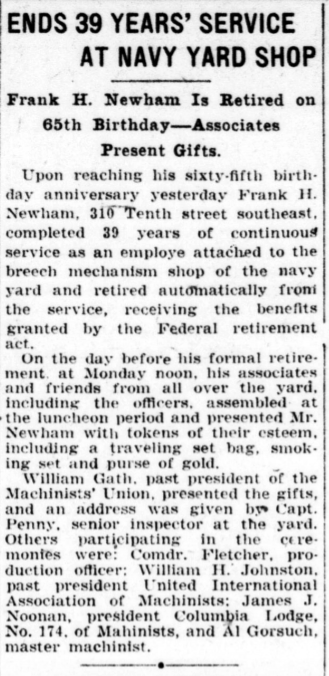
The Evening Star, February 23, 1927. Courtesy of the Library of Congress.
The Navy Yard hosts a retirement ceremony for a long-time employee in the breech mechanism shop. The National Museum of the U.S. Navy continues to host retirement ceremonies today.
The Washington Herald details the physical expansion of the Naval Gun Factory to support increased production of naval guns and ordnance.
Click on image to download.
This edition of the Evening Star outlines the Washington Navy Yard’s plans for Navy Day in 1930, one of the Yard’s most important public-facing events. Scheduled activities included parades, air shows, band concerts, and tours of different shops in the Naval Gun Factory.
Click on image to download.
Spectators observe a diving demonstration put on by 2nd Class Gunner's Mate Emerson Burie as a part of Navy Day exhibitions at the Washington Navy Yard in 1935. (Courtesy of the Library of Congress, LC-DIG-hec-39513).
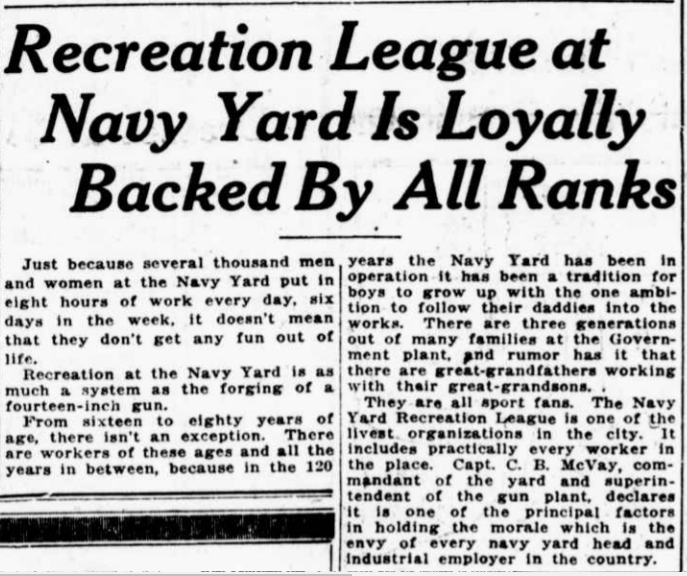
Washington Times, June 8, 1920, Courtesy of the Library of Congress.
An article in the Washington Times emphasizes the high level of participation in the Navy Yard Recreation League and its importance in boosting workers’ morale.
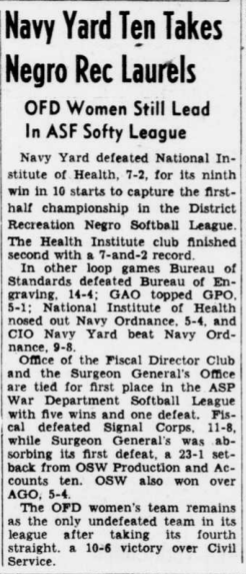
The Evening Star, June 25, 1943, Courtesy of the Library of Congress.
The Navy Yard’s softball team wins the first-half championship in the District Recreation Negro Softball League. Like in many other regions of the United States, sports remained mostly segregated during the first half of the 20th century.
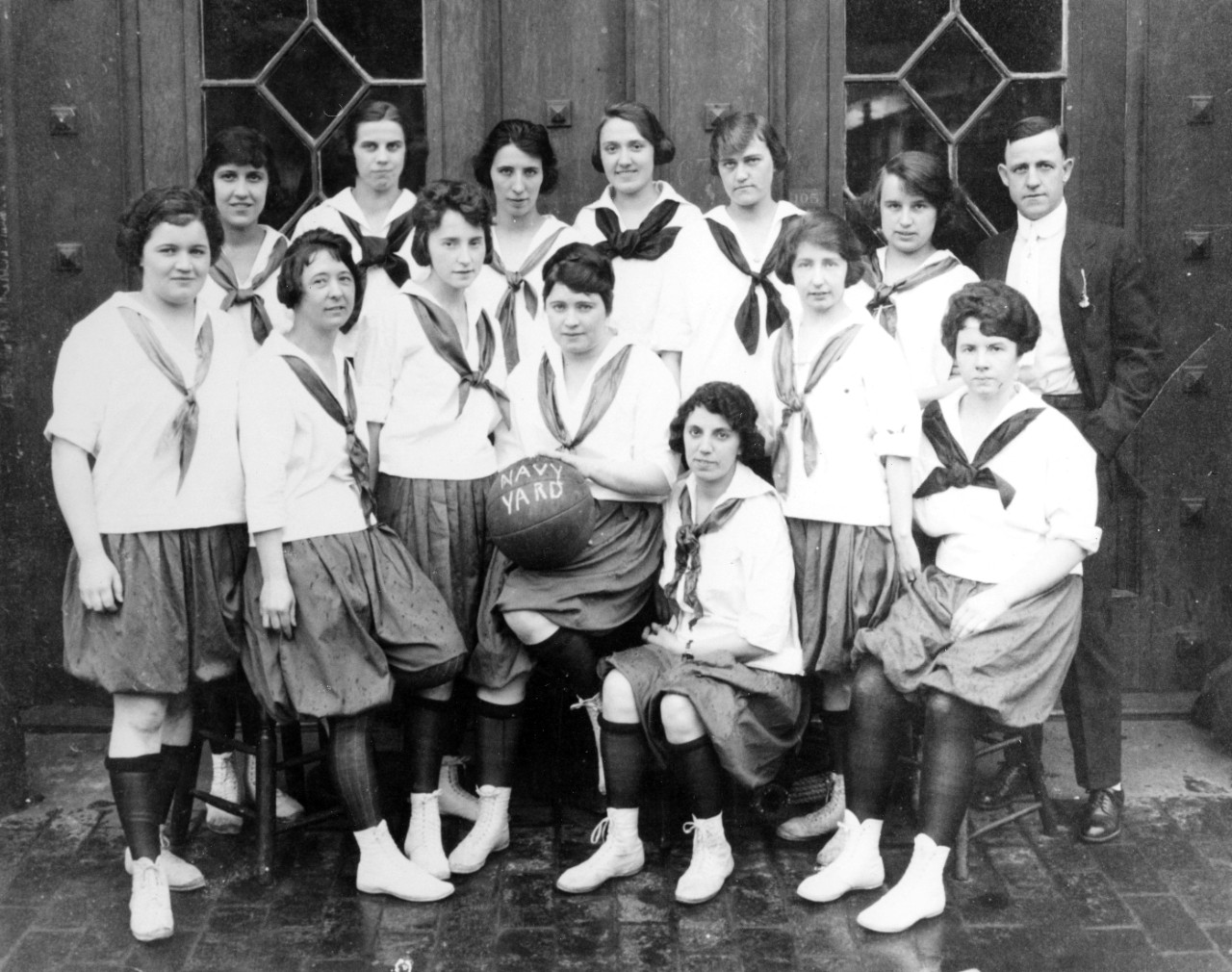
Photograph of the Washington Navy Yard’s Yeomanette basketball team during the World War I era. (Naval History and Heritage Command, UA 437.22)
Women in the Yard’s Workforce during World War II: Although women worked at the Navy Yard in smaller numbers dating back to the nineteenth century, the mass mobilization of the United States to support the war effort opened new avenues for employment for women in the defense industry, especially in higher-wage, skilled positions.
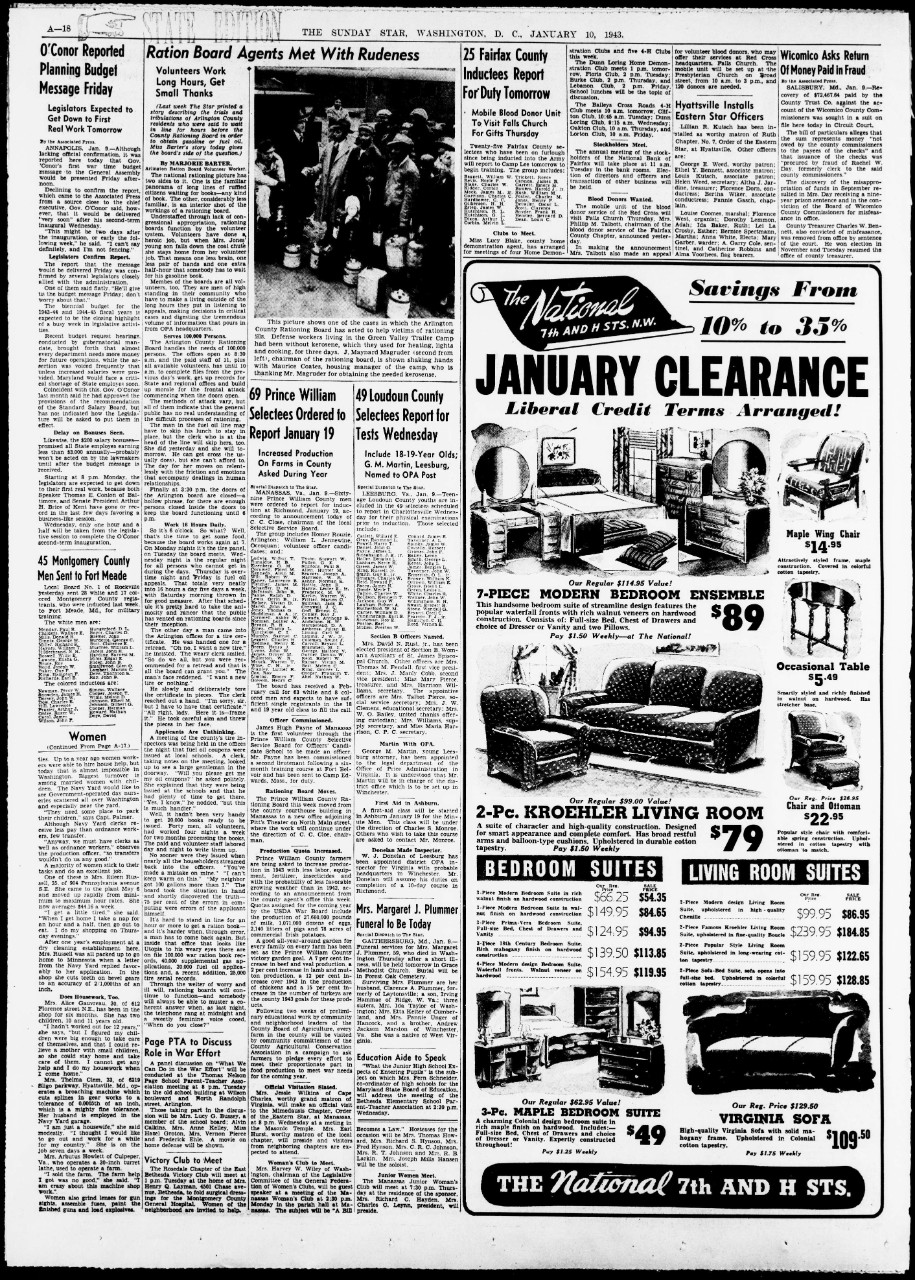
The Evening Star, January 10, 1943, Courtesy of the Library of Congress.
Click on image to download.
A woman employed at the Naval Gun Factory during World War II operates the 24-inch lathe. (National Archives, 80-G-38499).
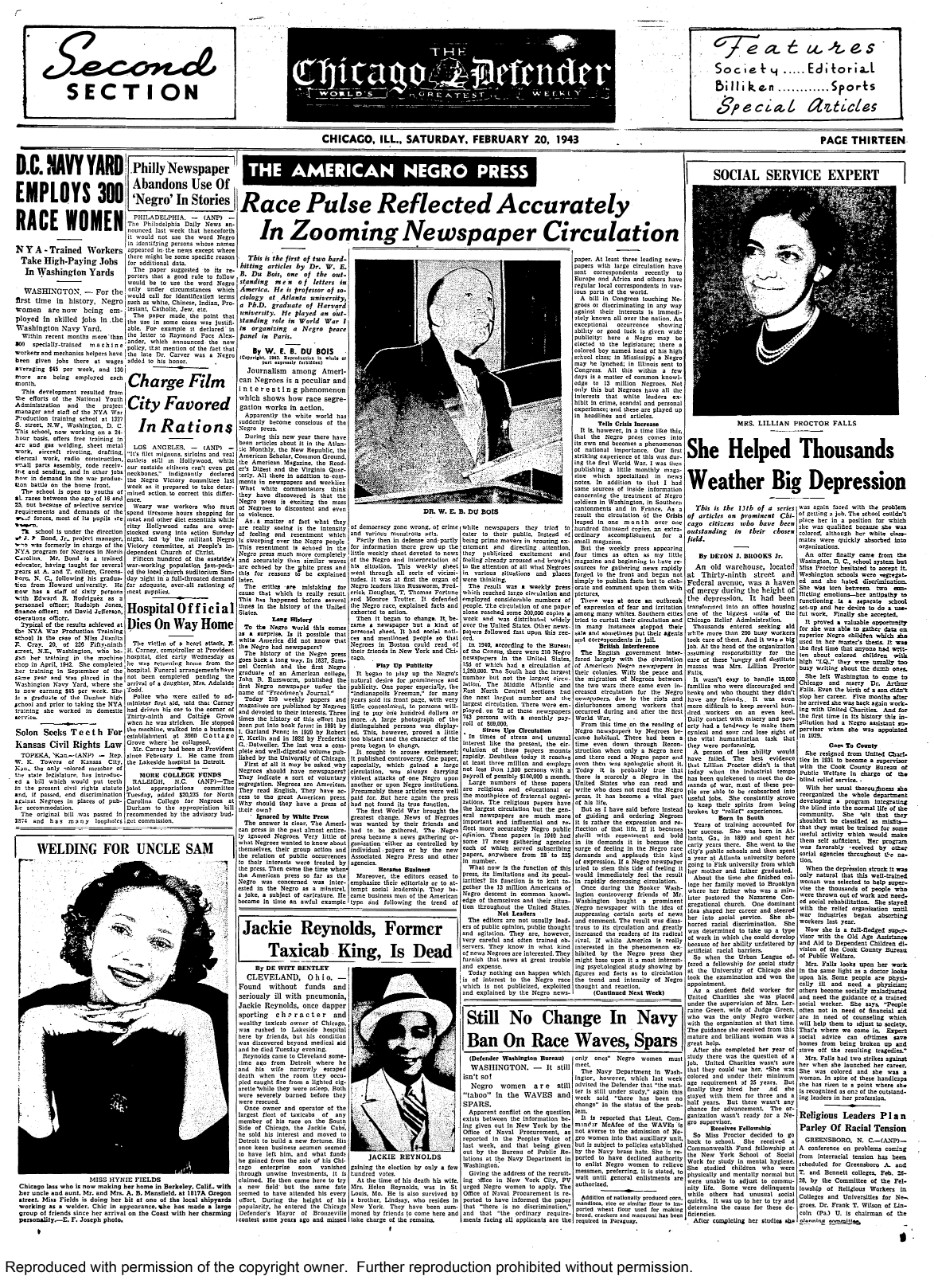
Chicago Defender, February 20, 1943, ProQuest Historical Newspapers.
Click on image to download
The Chicago Defender, one of the most influential Black newspapers in the United States, reports on the historic hiring of 300 Black women in skilled positions at the Naval Gun Factory in February 1943.
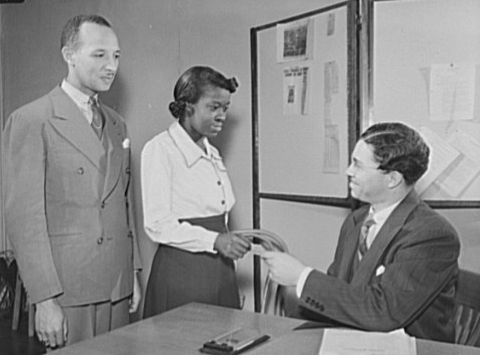
Juanita E. Gray receives her certificate after graduating from the National Youth Administration War Production and Training Center in Washington D.C., January 1943. She immediately assumed a position as an ordnance worker in the Naval Gun Factory. (Courtesy of the Library of Congress, LC-USE6- D-008264)
Washington Navy Yard Employees and the U.S. Census: The United States Census allows researchers to uncover personal details about D.C. residents, including those who worked at the Washington Navy Yard. Census data included name, race, marital status, birthplace, sex, the number of people in a specific household, education, occupation. The following images are digitized pages from the 1910 Census and reveal information about Navy Yard employees. Check them out!
Photo of workers at the Washington Navy Yard taken in the early 1910s (Naval History and Heritage Command, UA 42.07.01)


